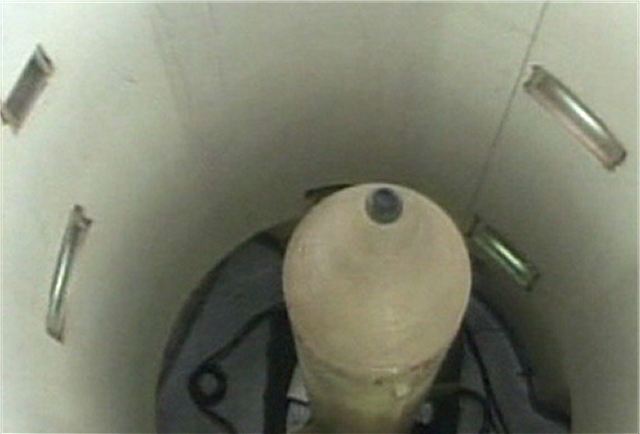|
|
|||
|
Defence & Security News - Iran
|
|||
|
|
|||
| Iran armed forces test-fired several ballistic missiles from silos as a part of military exercises. | |||
|
The Iranian Islamic Revolution Guards Corps (IRGC) Aerospace Force on Tuesday, March 8, 2016, began the final stage of 'Might of Velayat' missile drills in different parts of the country by firing ballistic missiles from silos. The drills were started this morning and were attended by IRGC Commander Major General Mohammad Ali Jafari and IRGC Aerospace Force Commander Brigadier General Amir Ali Hajizadeh.
|
|||
|
|
|||
 Iranian State television unveils the country's underground missile silos, Monday, June 27, 2011. Iranian State television unveils the country's underground missile silos, Monday, June 27, 2011. |
|||
|
|
|||
|
The Iranian military industry started the missile development program in earnest during Iran's long and costly war with Iraq. At times, throughout the war Iran found that it could not strike certain Iraqi facilities or targets with its own forces. This resulted in an ambitious missile development programme that is still continuing. Today, Iran is developing space launch vehicles and sophisticated medium-range ballistic missiles. In August 2011, Iran has unveiled underground silos that can carry missiles capable of hitting Israel and U.S. bases in the Gulf. State TV broadcast footage of deep underground silos, claiming that medium- and long-range missiles stored in them are ready to launch in case of an attack on Iran.The state television report broadcast footage of underground launching pads for the Shahab-3 missile, which have a range of more than 2,000 km. In October 2015, Iranian state television broadcast unprecedented footage of an underground tunnel packed with missiles and launcher units. According some military source, Iran has a missile base located in the Semna province which has about 50 underground missile silos housing Iran’s Shahab 3 ballistic missiles, serves as Iran’s second-largest missile-launching site, and is under the control of the Revolutionary Guards. The source said the Semnan ballistic missile base is surrounded by many smaller bases that provide training to the support forces from the Badr and Khatamol Anbia brigades. The base and the surrounding bases also serve as the center for the regime's aerospace activities, including the launches of Safir missiles that successfully placed satellites into orbit. Those launches are part of the intercontinental ballistic missile program. Iran has an arsenal of short-range, liquid-fueled missiles including the Scud B and Scud C, and is now able to produce SCUD type missiles on its own, such as the R-17E, a variant of the Russian Scud B. The Aerospace Industries Organization, a subsidiary of Iran's Ministry of Defense, supports the manufacturing process by engaging in SCUD missile restoration. Its short-range missile inventory also includes solid-fueled missiles, such as the Tondar-69 and the Fateh-110. |
|||
Iran armed forces test-fired several ballistic missiles from silos as a part of military exercises 10803163
- Posted On














